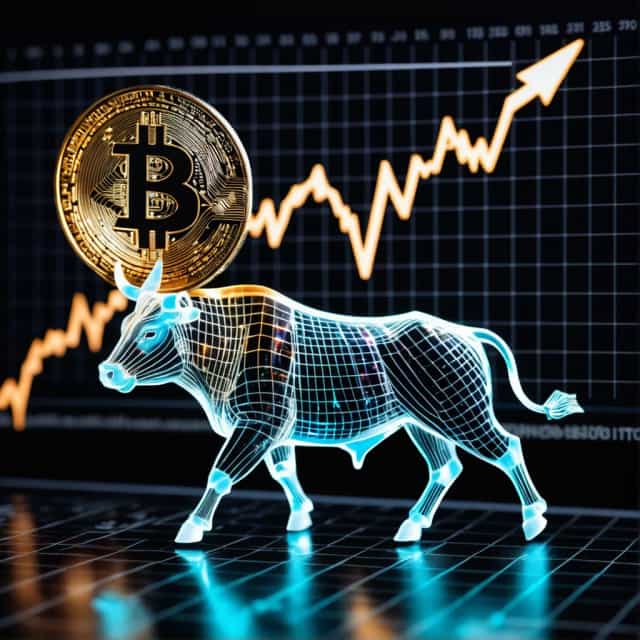
Image source: Block Media
The Economic Ripple of Trump's Reciprocal Tariffs: Rising Prices and Inflationary Trends
The "reciprocal tariffs" policy introduced by former President Donald Trump has begun to tangibly affect U.S. consumer prices, exemplifying how trade policies can reverberate through the economy. As businesses and consumers adjust to these new realities, shifts in pricing and inflation trends have become evident. This article explores the ways in which these tariffs are reshaping market dynamics, from consumer goods to asset prices.
Increasing Costs for U.S. Consumers
Recent reports indicate that Trump’s tariff policy, which imposes levies on a range of imported goods, is driving up prices on everyday products as businesses pass the financial burden onto their customers. The Financial Times (FT) noted that canned soup, auto parts, and other goods have experienced price increases, particularly as pre-tariff inventories are depleted. According to U.S. Department of Labor data, these price hikes are becoming increasingly apparent:
- Audio equipment: +14%
- Apparel: +8%
- Tools: +5%
Mark Mathews, chief economist of the National Retail Federation, underlined this trend, stating, "Price increases, which had been largely absent over the past two years, are now becoming more evident." This marks a clear shift after a relatively stable pricing environment in the years preceding the tariffs.
Inflation Under Control but Pressures Mount
Notably, the broader inflation rate remains contained despite initial fears. Consumer price inflation in the U.S. was recorded at 2.9% as of August. Some retailers mitigated the immediate impact of tariffs by stockpiling goods ahead of implementation or employing cost-reduction strategies. However, this approach appears to be a short-term measure.
A report by Telsey Advisory Group revealed that major retailers have applied price hikes across diverse product categories. Their findings show:
- 11 out of 29 items (e.g., T-shirts and footwear) have seen price increases.
- 12 out of 18 items (such as bicycles and dishwashers) have undergone marked price escalations.
Furniture giant Ashley Furniture plans to raise prices on its products by 3.5% to 12% in the near future, while AutoZone CEO Phillip Daniel foresees continued price increases, noting, "We expect more price hikes on the horizon."
Sector-Specific Tariffs Amplify Rising Costs
Certain industries face sharper impacts, owing to targeted tariffs on vital imports. Notable examples include the following:
- Brazilian Coffee: A 50% duty on imports has led to higher coffee prices.
- Steel and Tinplate Tariffs: Costs for goods reliant on imported tinplate, such as canned foods, are increasing significantly.
Campbell Soup CFO Carrie Anderson emphasized the burden of tinplate scarcity on pricing, underscoring the ripple effect of sector-specific trade policies.
Companies Absorbing Costs... But Not for Long
While businesses have shielded consumers from the full brunt of tariffs thus far, the strategy may prove unsustainable. According to Nathan Sheets, chief economist at Citigroup, companies have absorbed 60% to 70% of the additional costs generated by tariffs. However, Sheets warned that such a dynamic is poised to shift. "The burden is likely to shift further onto consumers over time," he noted, signaling potential price hikes in the near future.
Tariffs and the Appeal of Hard Assets
Rising inflation caused by these tariffs is intensifying focus on the debasement trade, particularly as the value of the U.S. dollar weakens. Investors are gravitating toward assets with finite supply—such as gold and Bitcoin (BTC)—to hedge against the dollar's reduced purchasing power. Both Bitcoin and gold have recently surged to record highs, reflecting growing demand for inflation-resistant investments.
Conclusion: Navigating the Economic Ripple Effects
As U.S. businesses and consumers grapple with the consequences of the "reciprocal tariff" policy, its effects on pricing, inflation, and trade dynamics are becoming increasingly visible. These tariffs not only disrupt supply chains and industries but also influence monetary trends and global asset markets. Moving forward, the interplay between trade policy, inflation, and macroeconomic indicators will remain a critical area for analysis and adaptation. Businesses, consumers, and policymakers alike must remain vigilant as these economic pressures evolve, signaling broader shifts in the international trade landscape.










